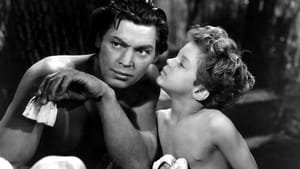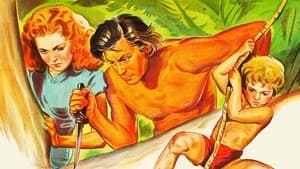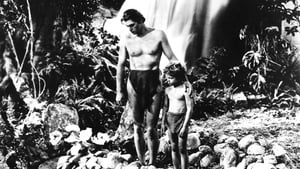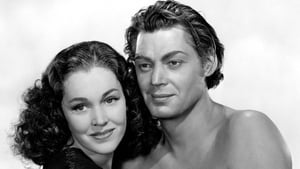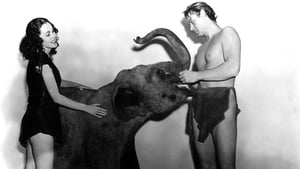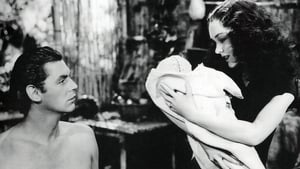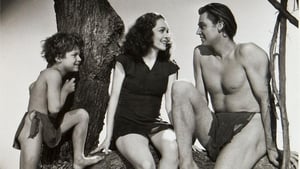Contact: [email protected]
Video Sources 0 Views
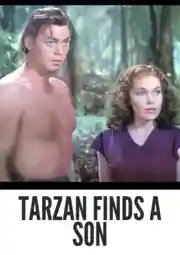
Synopsis
[ez-toc]





Introduction
In the vast realm of classic Hollywood films, there are gems that withstand the test of time, captivating audiences across generations. Among these treasures is “Tarzan Finds a Son Colorized,” a cinematic masterpiece originally released in 1939. This article explores the significance of this classic, the magic of colorization in film restoration, and its lasting impact on the world of old movies.
Read Media File Transfer Agreement: Terms and Conditions
Read FAQ
The Story of Tarzan Finds a Son Colorized
In the heart of the jungle, “Tarzan Finds a Son Colorized” takes us on an adventurous journey with the iconic characters Tarzan and Jane. The film unfolds as a plane crashes near Tarzan’s jungle home, leading him to rescue a baby boy named Boy. Tarzan and Jane decide to adopt the child, introducing an element of family into the jungle’s wild beauty.
As the Greystoke family fortune looms in the background, the Zambeli tribe becomes a crucial part of the narrative. The film beautifully intertwines the story of the Greystokes with the cultural dynamics of the Zambeli tribe, creating a rich tapestry against the backdrop of the jungle. The arrival of a search party threatens the tranquil existence of Tarzan’s family, leading to a conflict that tests the bonds forged in the heart of nature.
“Tarzan Finds a Son Colorized” is not merely an adventure; it is a tale of love, family, and the delicate balance between civilization and the untamed beauty of the jungle. The film’s exploration of these themes elevates it beyond a mere action-packed narrative, making it a timeless classic.
The Cast and Production Details
At the forefront of this cinematic treasure are the legendary Johnny Weissmuller and Maureen O’Sullivan, portraying Tarzan and Jane. Their on-screen chemistry and portrayal of these iconic characters contributed significantly to the success of the MGM film series. Johnny Weissmuller, known for his athletic prowess as an Olympic swimmer, brought a unique physicality to the role of Tarzan. Maureen O’Sullivan, on the other hand, embodied the spirit of Jane with grace and charm.
The MGM film series, of which “Tarzan Finds a Son Colorized” is a part, elevated the Tarzan legend to new heights. The lush production details and meticulous attention to the jungle environment enhanced the film’s immersive quality, creating a cinematic experience that transcends time.
The chemistry between Weissmuller and O’Sullivan is palpable, adding a layer of authenticity to their portrayal of Tarzan and Jane. The success of the MGM film series owes much to the charisma and talent of these actors, who became synonymous with the iconic characters they brought to life.
The Colorization Process
One of the remarkable aspects of “Tarzan Finds a Son Colorized” is the application of advanced colorization techniques in film restoration. The film, originally black and white, underwent a transformative process that breathed new life into its frames. The colorization process, enabled by technological advancements, opens a window into the past, allowing audiences to see classic Hollywood in a vibrant spectrum.
The art of colorization has evolved over the years, and the advanced techniques employed in “Tarzan Finds a Son Colorized” showcase the potential of this process in preserving and revitalizing old movies. While purists may argue that colorization alters the original artistic vision, there’s no denying the accessibility it brings to newer generations unfamiliar with black and white cinematography.
The benefits of colorizing classic films like “Tarzan Finds a Son” are multifaceted. It not only introduces these classics to a younger audience but also provides a fresh perspective for those who may have seen the film in its original black and white form. The vibrancy of the colorized jungle and characters adds a layer of engagement, breathing new life into the timeless tale.
However, criticisms of colorization persist. Some argue that it can dilute the atmosphere and aesthetic intended by the original filmmakers. The delicate balance between preserving the authenticity of the classic and making it palatable for modern audiences remains a point of contention. Nevertheless, “Tarzan Finds a Son Colorized” serves as an interesting case study in the ongoing debate surrounding the colorization of old movies.
Exploring the Jungle with Tarzan and Jane
“Tarzan Finds a Son Colorized” immerses viewers in the untamed beauty of the jungle. Tarzan’s connection to the Greystoke family fortune adds depth to his character, showcasing the contrast between the civilized world and the wilderness he calls home. The Zambeli tribe, with its cultural nuances, introduces an element of diversity, further enriching the film’s narrative.
Jungle animals play a vital role in the storytelling, creating a vibrant and dynamic backdrop. From the majestic elephants to the playful monkeys, each creature contributes to the film’s atmosphere, making the jungle a character in its own right. The portrayal of nature’s wonders adds a layer of magic to “Tarzan Finds a Son Colorized,” transcending it beyond a mere adventure film.
The Greystoke family fortune, intricately woven into the narrative, provides insight into Tarzan’s past and his connection to the civilized world. This juxtaposition serves as a thematic anchor, allowing the audience to reflect on the dichotomy of Tarzan’s identity and the choices he makes in raising Boy in the heart of the jungle.
The Zambeli tribe, portrayed with cultural sensitivity, brings authenticity to the film. Their interactions with Tarzan and Jane offer a glimpse into a world untouched by modern civilization, emphasizing the clash of cultures when the outside world encroaches upon their pristine existence.
Jungle animals, beyond being mere set pieces, play a symbolic role in “Tarzan Finds a Son Colorized.” The elephants, with their wisdom and strength, become symbols of the jungle’s resilience. Monkeys, with their playful antics, add a touch of levity to the narrative. Each creature contributes to the film’s rich tapestry, underscoring the delicate balance of nature that Tarzan calls home.
Civilization vs. Jungle
At its core, “Tarzan Finds a Son Colorized” explores the timeless theme of civilization versus the jungle. The clash between Tarzan’s untamed world and the arrival of the search party represents the struggle between different ways of life. The film delves into the complexities of adapting to a new environment and the challenges that arise when civilization meets nature.
This theme makes “Tarzan Finds a Son Colorized” not only a thrilling adventure but also a thought-provoking exploration of human nature. The film’s ability to balance action with deeper themes makes it a versatile viewing experience, suitable for audiences of all ages. As the conflict unfolds, the audience is prompted to reflect on the delicate equilibrium between the civilized world and the untouched beauty of the jungle.
The search party’s arrival introduces an element of tension, challenging the harmony Tarzan has cultivated in the jungle. The film invites viewers to question the definition of “civilization” and whether it is synonymous with progress or a potential threat to the purity of nature. The clash between these opposing forces serves as a microcosm of the broader human struggle to coexist with the environment.
“Tarzan Finds a Son Colorized” skillfully navigates this theme, offering a nuanced perspective on the clash between civilization and the jungle. The narrative unfolds with a sense of urgency, mirroring the real-world challenges of balancing progress with environmental preservation. This thematic depth elevates the film beyond a simple adventure, establishing it as a relevant commentary on the human impact on the natural world.
The Impact and Legacy of “Tarzan Finds a Son Colorized”
“Tarzan Finds a Son Colorized” holds a special place in the pantheon of family-friendly movies. Its enduring legacy lies in its ability to captivate audiences across generations. The film’s impact on classic film history is undeniable, contributing to the lasting allure of Hollywood’s golden age.
As a family-friendly movie, “Tarzan Finds a Son Colorized” continues to be a go-to choice for those seeking wholesome entertainment. Its exploration of family dynamics, cultural diversity, and the clash of civilizations resonates with viewers of all ages. The film’s legacy is a testament to its timeless appeal, making it a must-watch for cinephiles and families alike.
The enduring popularity of “Tarzan Finds a Son Colorized” is not only a testament to its engaging narrative but also to its cultural significance. The film served as a bridge between the golden age of Hollywood and the evolving landscape of cinema. Its success paved the way for subsequent adaptations and contributed to the enduring legacy of the Tarzan character in popular culture.
The film’s impact on classic film analysis is noteworthy. Scholars and enthusiasts alike continue to dissect its themes, performances, and production choices. The enduring discussions surrounding “Tarzan Finds a Son Colorized” highlight its importance in shaping the trajectory of classic Hollywood cinema. Its inclusion in the MGM film series further solidifies its place in the annals of film history.
Conclusion
In the lush world of “Tarzan Finds a Son Colorized” (1939), the magic of Johnny Weissmuller and Maureen O’Sullivan brings to life a timeless adventure. The colorization process breathes new vitality into this classic Hollywood film, allowing audiences to experience the jungle in a way never before seen. As we journey through the heart of the Greystoke family fortune, encounter the Zambeli tribe, and witness the clash between civilization and the jungle, it becomes evident why this film remains a hallmark of old movies.
“Tarzan Finds a Son Colorized” stands as a testament to the enduring power of classic cinema. Its impact on family-friendly movies and its contribution to the legacy of Hollywood’s golden age solidify its place in film history. As we celebrate the vibrant hues of this colorized masterpiece, we acknowledge the everlasting charm of Tarzan, Jane, and Boy swinging through the vines, forever etched in the tapestry of classic Hollywood. In revisiting this timeless classic, audiences not only experience the thrill of adventure but also witness the evolution of cinema and the art of storytelling through the lens of Tarzan’s jungle.
